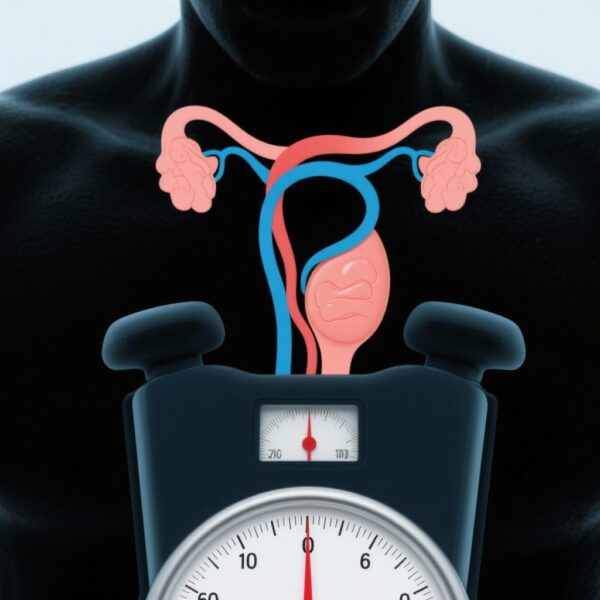Highlight
- Lithium shows a consistent trend toward reducing suicide attempts and completed suicides in randomized trials, though statistical significance is not achieved, likely due to limited sample sizes and methodological heterogeneity.
- Reliability of suicidality outcome measures in clinical trials remains challenged by diagnostic diversity, subtherapeutic dosing, and prior suicidality variability among participants.
- Findings align with observational data supporting lithium’s unique anti-suicidal properties beyond mood stabilization in bipolar disorder.
Study Background
Suicide remains a leading cause of premature death worldwide, with particularly elevated risk among individuals diagnosed with bipolar disorder type I (BD-I). Lithium has long been recognized as a first-line treatment for acute mania and relapse prevention in BD-I. Beyond mood stabilization, lithium’s potential anti-suicidal properties have been reported in observational studies showing notable reductions in suicide rates and severe suicide attempts. Given these findings, a rigorous synthesis of randomized controlled trials (RCTs) assessing lithium’s direct impact on suicidal behaviors and ideation is clinically imperative to guide evidence-based treatment strategies. This updated meta-analysis aims to clarify the strength and nature of lithium’s efficacy against suicidality through systematic evaluation of controlled interventional studies published over the last decade plus earlier foundational research.
Study Design and Methods
The investigators conducted a systematic review and meta-analysis compliant with Cochrane protocols and PRISMA guidelines. They searched OVID databases—Embase, MedLine, and PsychINFO—covering literature from January 2013 to July 2024, focusing on randomized trials explicitly reporting lithium’s effects on suicidality, including suicidal ideation, suicide attempts, and suicide mortality. Earlier studies were identified through manual reference checks. Two independent reviewers extracted data and assessed study quality to mitigate bias. The analysis pooled data from 15 eligible RCTs involving 3,036 participants: eight placebo-controlled trials with 1,698 patients and seven open-label studies including 1,338 individuals.
Key Findings and Results
Lithium consistently demonstrated protective trends against suicide attempts and completed suicide: the odds ratio (OR) for suicide attempts was 0.73 (95% confidence interval [CI]: 0.41 to 1.31), reflecting 25 events in the lithium group versus 63 in placebo controls. For completed suicides, lithium treatment yielded an OR of 0.61 (95% CI: 0.25 to 1.48), with 4 deaths recorded among lithium-treated subjects versus 13 in the placebo arms. These effect sizes, while clinically meaningful, did not reach statistical significance, indicating potential type II error due to inadequate power.

Fig. 2. Forest plot showing meta-analysis of suicide attempts in randomized trials comparing lithium with placebo or with active comparators.

Fig. 3. Forest plot showing meta-analysis of completed suicides in randomized trials comparing lithium with placebo or with active comparators.
Attempts to meta-analyze suicidal ideation outcomes were hampered by heterogeneity across studies in measurement tools and reporting methods, precluding robust quantitative synthesis.
Contributing factors to equivocal statistical significance included small cohort sizes relative to the low event rate of suicide, diagnostic heterogeneity encompassing bipolar disorder and related mood conditions, variability in lithium therapeutic serum levels (some studies reporting subtherapeutic dosing), and inconsistent accounting for participants’ baseline suicidality histories. Such limitations affect the sensitivity and specificity of trial endpoints measuring suicidality.
Expert Commentary
This meta-analysis reinforces the concept that lithium’s anti-suicidal effects, despite not consistently demonstrating statistically significant efficacy in RCTs, remain supported by a convergence of moderate protective effects and corroborative observational data. The challenges inherent in researching suicide prevention within controlled clinical trials are well known – notably the rarity of completed suicide events and ethical constraints limiting trial designs. While statistical power is challenging to achieve, the magnitude of risk reduction observed aligns with the longstanding clinical experience favoring lithium’s protective role.
Mechanistically, lithium’s neuroprotective and neuroplastic effects, modulation of serotonergic neurotransmission, and stabilization of mood fluctuations provide biologically plausible pathways mediating reduced suicidality. Current guideline statements still recognize lithium as the preferred agent for suicide risk mitigation in bipolar disorder, underscoring the importance of maintaining therapeutic lithium levels for optimal benefit.
Future investigations should prioritize larger, multicenter RCTs with standardized suicidality assessments and rigorous adherence to lithium dosing protocols, alongside consideration of patient stratification by prior suicide risk. Such refinements could enhance assay sensitivity and clarify lithium’s preventative efficacy more definitively.
Conclusion
Lithium continues to demonstrate promising anti-suicidal effects in randomized trials, mirroring findings from extensive observational studies. Although statistical significance could not be conclusively demonstrated due to methodological and power limitations, the consistency of directionality in reducing suicide attempts and deaths supports lithium’s unique clinical role in suicide prevention for patients with bipolar disorder and related conditions. Clinicians should consider lithium’s favorable risk-benefit profile and its neurobiological actions when managing high-risk populations. Research efforts must focus on overcoming trial design barriers to strengthen the evidence base, enabling optimized suicide prevention strategies incorporating lithium as a cornerstone pharmacotherapy.
References
Wang JX, Le GH, Wong S, Teopiz KM, Kwan ATH, Rosenblat JD, Rhee TG, Ho R, Lo HKY, Goldberg JF, Vinberg M, Grande I, Mansur R, Meyer JM, McIntyre RS. The efficacy of lithium in the treatment of suicidal ideation, behavior and suicide: An updated systematic review and meta-analysis of randomized controlled trials. J Affect Disord. 2025 Oct 15;387:119487. doi: 10.1016/j.jad.2025.119487 IF: 4.9 Q1 . Epub 2025 May 27. PMID: 40441661 IF: 4.9 Q1 .
Additional relevant sources:
– Cipriani A, Hawton K, Stockton S, Geddes JR. Lithium in the prevention of suicide in mood disorders: updated systematic review and meta-analysis. BMJ. 2013;346:f3646.
– Baldessarini RJ, Tondo L, Hennen J. Lithium treatment and suicide risk in major affective illnesses: Update and new findings. J Clin Psychiatry. 2006;67 Suppl 5:44-7.
– Geddes JR, Burgess S, Hawton K, Jamison K, Goodwin GM. Long-term lithium therapy for bipolar disorder: systematic review and meta-analysis of randomized controlled trials. Am J Psychiatry. 2004;161(2):217-22.




测试